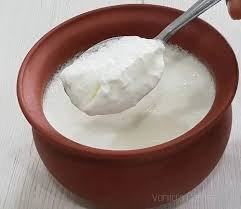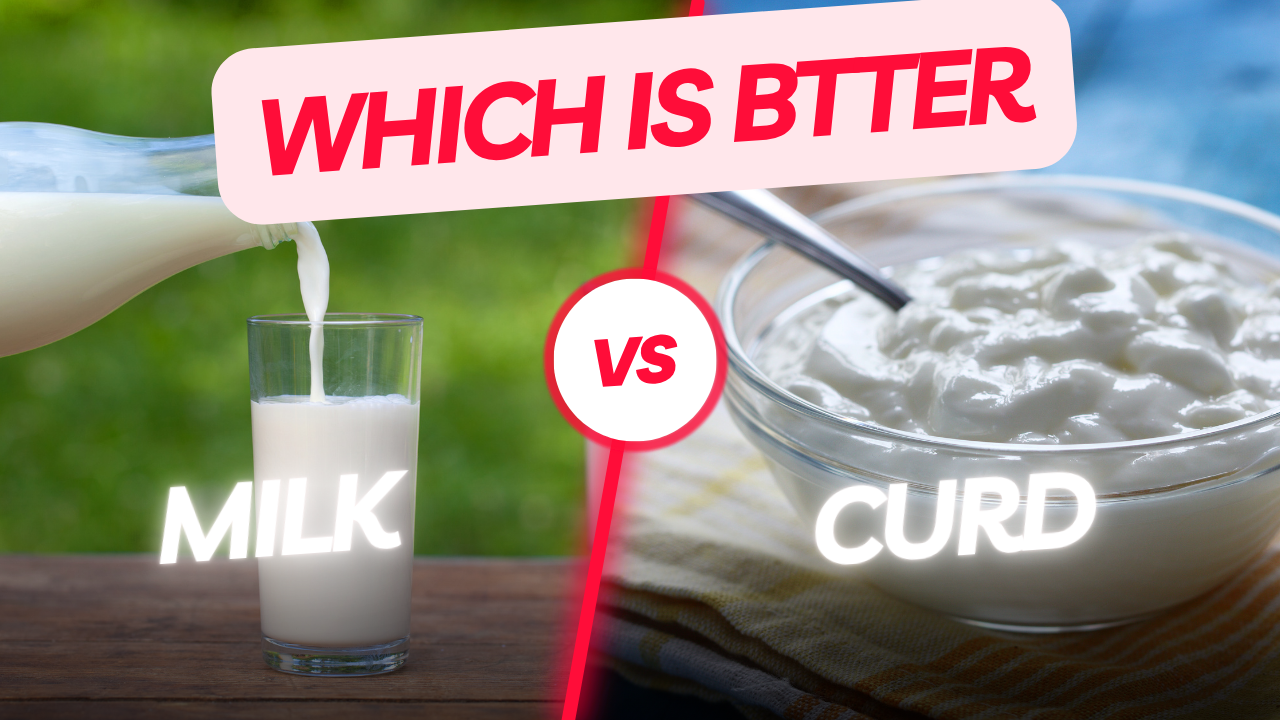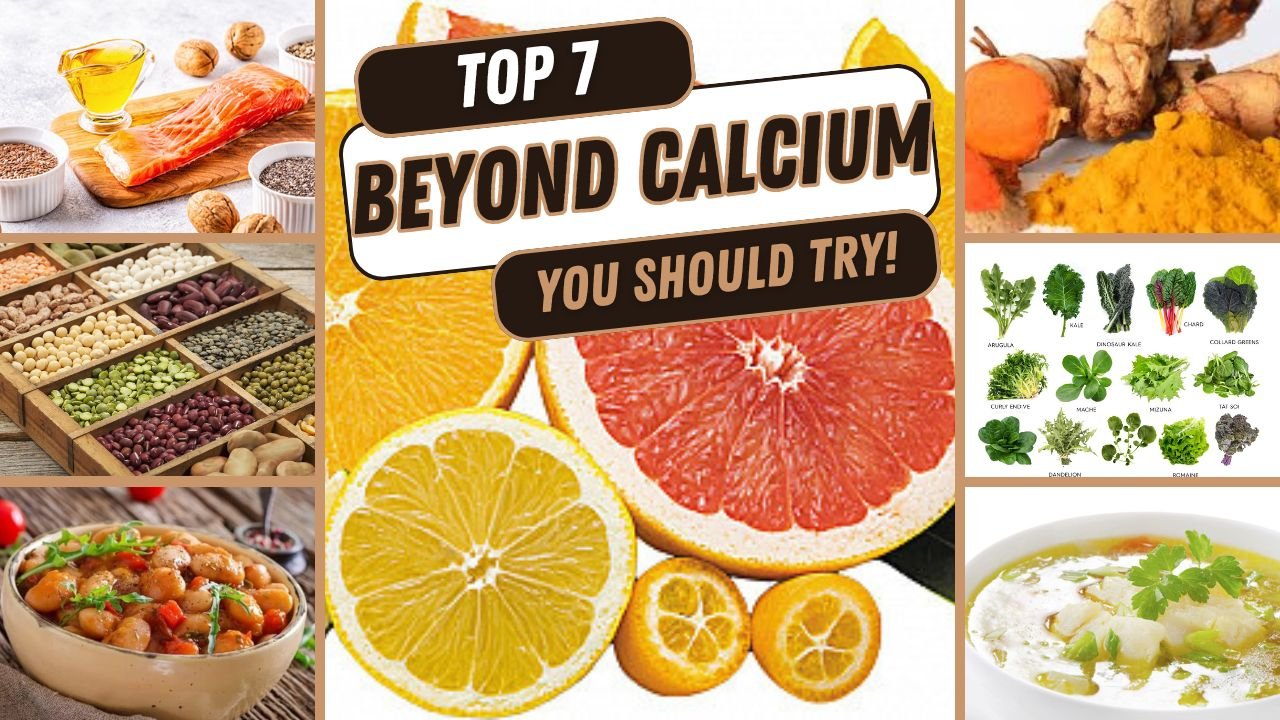Milk vs Curd Which is Better
Following article gives a glimpse on milk vs curd which is better.
Nutritional Face-Off: Milk vs Curd
Let’s compare similar servings (roughly 1 cup or 250ml of fat-free versions):
| Nutrient | Fat-Free Milk | Fat-Free Curd | Who Wins? |
|---|---|---|---|
| Calories | ~90 kcal | ~98 kcal | Very Similar |
| Protein | ~9 grams | ~11 grams | Curd |
| Calcium | ~300-350 mg (High) | ~200-220 mg (Good) | Milk |
| Vitamin B12 | ~8% Daily Needs | ~8% Daily Needs | Tie |
| Vitamin A | ~2% Daily Needs | ~2% Daily Needs | Tie |
| Vitamin D | Often Fortified | Less Fortified | Milk |
| Probiotics | None | High Amounts | Curd |
| Lactose | Higher Amount | Lower Amount | Curd |
| Sodium | Lower | Higher | Milk |
| Potassium | Higher | Lower | Milk |
Key Takeaways:
-
Milk is the Calcium & Vitamin D Champion: Essential for building and maintaining strong bones and teeth, especially crucial for growing children and seniors at risk of osteoporosis. Fortified milk is a top source of Vitamin D, aiding calcium absorption.
-
Curd is the Protein & Probiotic Powerhouse: Offers slightly more protein per serving, vital for muscle building and repair. Its biggest win is probiotics – live bacteria that boost gut health, digestion, and immunity. Fermentation also breaks down lactose, making curd easier to digest for many.
Health Benefits: What Each Dairy Delivers
-
Milk Benefits:

-
Bone Builder: High calcium + Vitamin D = Stronger bones, reduced fracture risk.
-
Hydration Helper: Contains water and electrolytes (like potassium).
-
Muscle Maintainer: Provides quality protein (casein and whey) for muscle repair.
-
Blood Pressure Buddy: Potassium helps regulate blood pressure.
-
Tooth Protector: Calcium supports dental health.
-
-
Curd Benefits:

-
Gut Guardian: Probiotics balance gut bacteria, improving digestion, reducing bloating/gas, and fighting infections.
-
Immunity Booster: A healthy gut directly links to a stronger immune system.
-
Lactose Digestion Aid: Lower lactose levels and probiotics make it easier on sensitive stomachs.
-
Keeps You Fuller: Its thicker texture and protein content promote satiety.
-
Potential Weight Management: Its protein and satiety factors can support weight loss efforts.
-
When to Choose What: Age-by-Age Guide & Specific Needs
| Life Stage/Need | Milk Recommendation | Curd Recommendation | Why? |
|---|---|---|---|
| Babies & Toddlers | Primary source (breast milk/formula first; cow’s milk usually after 1 year). | Can be introduced (around 8-10 months+), choose plain, full-fat. Small amounts. | Milk provides essential fats & calcium for rapid growth. Curd offers digestible protein/probiotics. 45 |
| Children & Teens | Essential! 1-3 glasses/day (depending on age). Crucial for bone growth/spurt. | Daily serving (1 bowl). Great for immunity, digestion, and adds protein. | High calcium needs for growing bones/muscles (Milk). Curd supports overall health during active years. 356 |
| Adults | 1-2 glasses/day (choose low-fat if watching calories/saturated fat). | Excellent Daily Choice! 1-2 bowls/day. Ideal for gut health, immunity, protein. | Maintains bone density (Milk). Curd’s probiotics combat stress, poor diet effects, aid digestion. Protein supports muscle. |
| Seniors (60+) | Very Important (1-2 glasses). Focus on calcium/Vit D for bone density. | Highly Beneficial (1 bowl/day). Probiotics aid digestion common in age. Protein fights muscle loss. | Prevents osteoporosis (Milk). Curd counters age-related digestive slowdown & sarcopenia (muscle loss). |
| Weight Loss | Choose skim/low-fat. Moderation due to calories/sugars. | Better Choice! Fat-free plain curd. More protein/satiety, lower sugar, probiotics may help metabolism. | Curd keeps you fuller longer with similar calories, aiding calorie control. |
| Lactose Intolerance | Usually problematic (causes bloating, gas, diarrhea). Lactose-free milk is an option. | Much Better Tolerated! Probiotics digest most lactose. Start small. | Fermentation breaks down lactose. Most with mild intolerance handle curd well. |
| Digestive Issues | Can sometimes aggravate (especially if sensitive). | Best Choice! Probiotics actively improve gut health, reduce bloating, aid constipation/diarrhea. | Live cultures restore gut balance and function. |
| Post-Workout | Good option. Provides protein + fluids for hydration. | Excellent option. Slightly higher protein supports muscle repair. | Both provide quality protein. Curd’s edge is small; choose preference! |
Important Considerations & Myths
-
Fat Matters: “Full-fat” (whole) milk/curd has more saturated fat and calories than “low-fat” or “skim” versions. Choose based on your calorie needs and heart health. Recent research suggests full-fat dairy might not be as bad as thought, but moderation is key.
-
Added Sugar Alert! Flavored milks and fruited/sweetened yogurts often pack huge amounts of added sugar. Always opt for plain, unsweetened versions and add your own fruit if needed.
-
Ayurvedic Insight (Curd): Traditional Ayurveda advises against daily curd consumption for some body types (increasing “Pitta” or heat) and recommends avoiding it at night or if you have inflammatory conditions, bleeding disorders, or mucus. Buttermilk (chaas) is often preferred.
-
Not for Everyone: People with severe milk protein allergy (different from lactose intolerance) must avoid both. Those with conditions like arthritis or asthma might find limiting curd beneficial (Ayurvedic/experiential view).
-
Myth: Milk is Essential for Adults: While nutritious, adults can get calcium/protein from other sources (leafy greens, nuts, fortified plant milks). However, it remains a highly convenient source.
-
Myth: Curd is Just Thick Milk: The fermentation process fundamentally changes it, adding probiotics and reducing lactose, making it a distinct food with unique benefits.
The Verdict: Do We Really Have to Choose?
Both milk and curd are nutritional winners! They offer complementary benefits:
-
For Strong Bones & Growth: Milk is unparalleled, especially for kids and teens.
-
For Gut Health & Easy Digestion: Curd is the clear champion.
-
Overall Health: Including both in a balanced diet provides a wider range of nutrients – calcium, vitamin D, high-quality protein, and probiotics.
The Ideal Approach: Enjoy milk for its bone-building strengths, especially in the morning or as a post-workout drink. Incorporate curd daily (like with lunch or as a snack) for its gut-boosting probiotics and protein. Choose plain, low-fat/skim versions most often, and be mindful of added sugars. Listen to your body – if milk causes discomfort, try lactose-free milk or focus on curd. If you have specific health concerns, consult a doctor or nutritionist.
By understanding what milk and curd each provide best, you can make smart, delicious choices for every stage of life!












